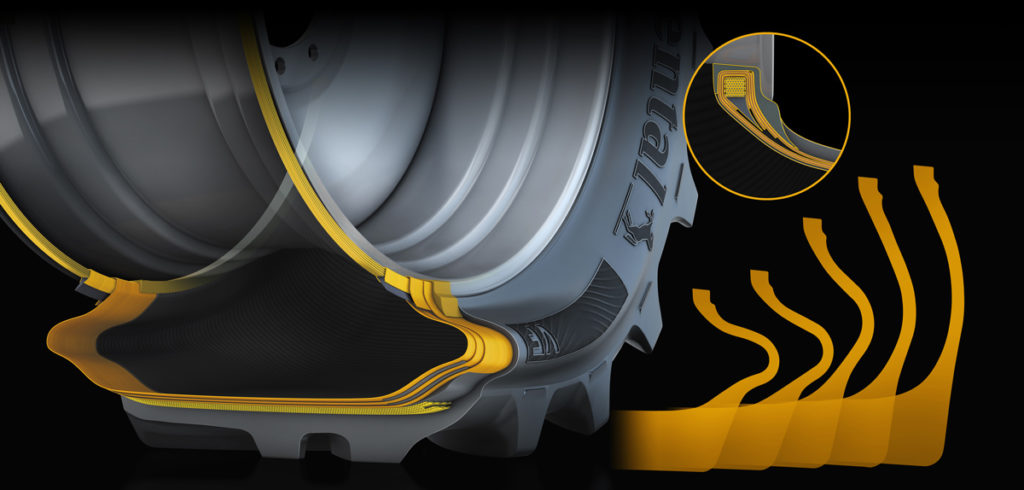In the agricultural and off-highway sector, both Continental and Alliance have released new products. In the case of the latter, its Forestar III forest tire has been updated, with three new sizes available; 710/40-24.5, 710/55-28.5 and 780/50-28.5.
Alliance said The Forestar III has already received impressive feedback from users since its launch in 2019, performing well against competitors in tests on forestry harvesters. The tire’s tread width ensures a large footprint which in turn reduces ground pressure in order to protect forest soils. Wide lug center blocks are a distinctive feature of the tire, allowing it to deliver good traction without the need for tracks.
A dual lug angle optimizes both traction and durability, combining a lower angle at the shoulder which enhances traction, with a higher angle at the center of the tire to reduce wear and ensure durability. Wide shoulder lugs with high fillet radius enhance the lateral stability of the tire, further adding to traction abilities. Alliance said that – of great importance in woody environments – the unique shoulder buttress design strengthens the tire’s sidewalls and provides high stiffness while the curb-rib design enhances the protection of the tire against side impacts and cracks.
Meanwhile, Continental has developed a range of very high flexion (VF) tires for agricultural use, which the company says improve performance both off and on-road.
The new VF range features a more flexible sidewall with Continental’s patented N.Flex technology. On the road, it says this enables a vehicle to carry 40% more load than a standard tyre at the same pressure. Alternatively, in the field, the pressure of VF tires can be lowered by 40% compared with standard tires, even when carrying the same load. This spreads the weight of the vehicle over a larger surface area and reduces soil compaction.
Continental also claims VF tires offer time and fuel savings. The more flexible construction of the tire makes it possible to transition from the field to the road without adjusting the pressure. At the reduced pressure required for field use, the tire can also run at full speed on the road yet deliver the same fuel efficiencies as a standard tire at road pressure.



